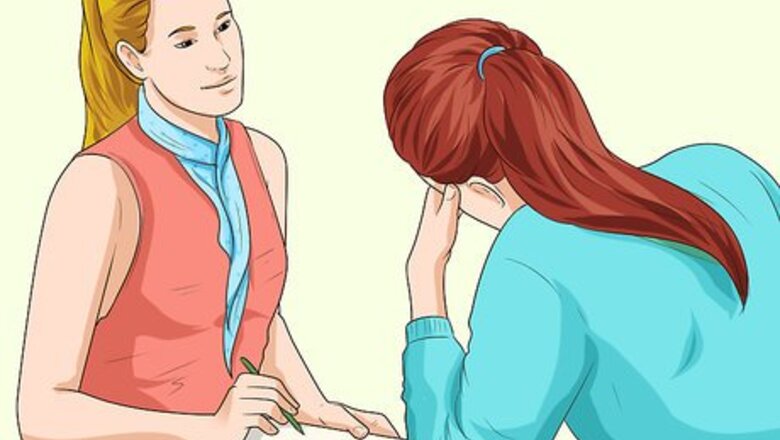
views
Using the Flooding Technique
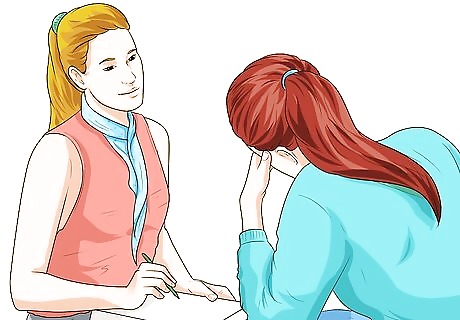
Discuss your fears with a therapist. It is not always necessary to use a therapist to treat phobias, but some people may feel more comfortable having a professional to guide them through different strategies. The most common methods for treating phobias are exposure therapy and cognitive therapy. Many therapists will be open to trying other methods such as social learning theory (modeling), biofeedback, and hypnotherapy. When it comes to deciding between self-administering and seeking a therapist, you should consider the severity of your phobia and your need for support. If your phobia is so severe that you have uncontrollable anxiety or panic attacks, or your fear keeps you from participating in activities such as office picnics or watching your son’s baseball game, then you should have additional support. Hypnotherapy should not be attempted without professional guidance.

Use imaginal exposure. Flooding is the process of exposing a person to the object of his or her phobia, in this case a wasp or bee, in a controlled environment. Since it may not be possible to safely expose yourself to a large amount of wasps and/or bees, a therapist might ask you to vividly imagine that bees and/or wasps are all around you. This is called imaginal exposure. Keep in mind that when you imagine the wasps and/or bees you will probably start to feel overwhelmed.

Wait for the fear and anxiety to subside. When you are exposed to a stimulus long enough and nothing bad happens, you will eventually stop being anxious or afraid. Note that this can take hours, and in some cases multiple exposures. Be persistent and allow the fear to pass.

Repeat the exposure as many times as needed. There is no set amount of exposures that will cure a phobia. You may find that one exposure does the trick, or you may need many exposures to be completely at ease with wasps and bees. Either way, expose yourself as much or as little as you need.
Using Systematic Desensitization

Learn to relax. Systematic desensitization is an application of counterconditioning, or removing a learned response to a stimulus. It works on the idea that you cannot be relaxed and anxious (or fearful) at the same time. Before you can learn to substitute a relaxation response for a fearful one, you must learn to relax. Some good relaxation techniques to learn include: Deep breathing Meditation Progressive muscle relaxation
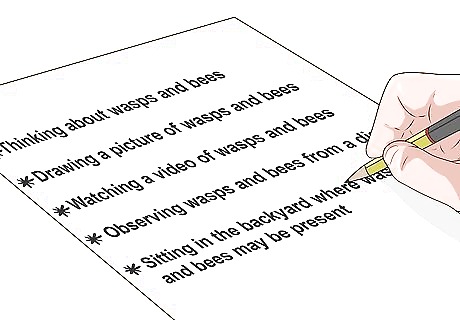
Make a list of things related to wasps and bees. Whereas flooding exposes you to your wasps and bees all at once, systematic desensitization exposes you to your fears gradually. You should write out 15-20 items or scenarios related to wasps or bees that cause you to feel anxious or fearful. You will expose yourself to each of these scenarios over time. For example, you might start a list such as this: Thinking about wasps and bees Drawing a picture of wasps and bees Watching a video of wasps and bees Observing wasps and bees from a distance Sitting in the backyard where wasps and bees may be present

Rank the items on the list. Use a scale of 0-100 to rank all of the items on your list. Zero designates no fear or anxiety associated with the item or scenario and 100 would be the most fear or anxiety that you can imagine. There is no need to overthink the rankings, just use the first number that comes to mind for each item. For example, your rankings might look something like this: Thinking about wasps and bees 12 Drawing a picture of wasps and bees 30 Watching a video of wasps and bees 57 Observing live wasps and bees from a distance 71 Sitting outside and seeing wasps and bees nearby 92
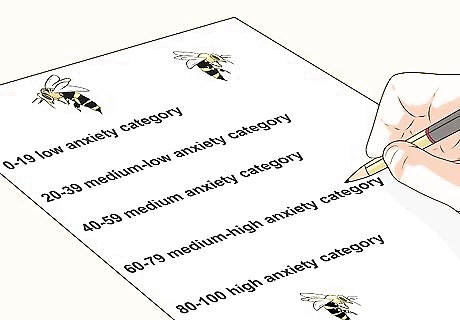
Sort the items into categories based on rank. You should have five levels of fear or anxiety ranging from low anxiety to high anxiety. It is ideal to have at least two items in each category. If you do not have two in each category you may need to reconsider your ranking of some items, or add new items into those categories. Group items ranked 0-19 in the low anxiety category. (e.g., Thinking about wasps and bees) Items that fall from 20-39 should be put in the medium-low anxiety category. (e.g., Drawing a picture of wasps and bees) Rankings of 40-59 will go into the medium anxiety category. (e.g., Watching a video of wasps and bees) Place items that rank 60-79 in the medium-high anxiety category. (e.g., Observing live wasps and bees from a distance) Put any item that ranks 80-100 in the high anxiety category. (e.g., Letting a wasp or bee land on your arm)
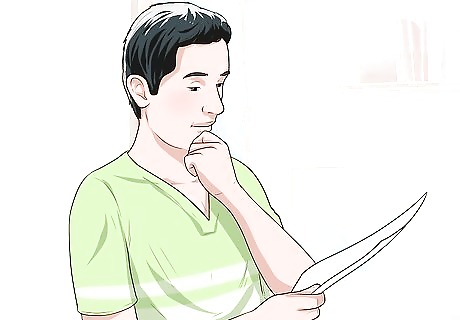
Choose items for your first session. You should choose up to three items for your first systematic desensitization session. These items should come from the low anxiety category, and maybe the medium-low anxiety category. You do not want to overwhelm yourself with the first session.
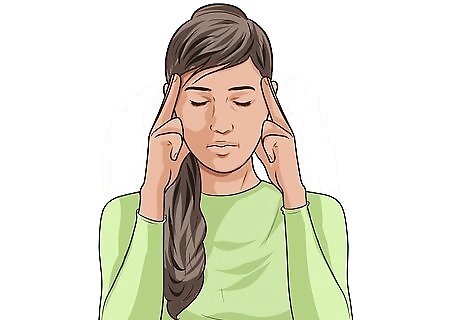
Conduct your first systematic desensitization session. Begin by using your prefered method of relaxation to induce a very relaxed state. Once you are relaxed, introduce the first item or scenario that causes anxiety or fear, e.g., thinking about wasps and bees. Continue the exposure only as long as you are comfortable doing so, then stop and evaluate your anxiety level (from 0-100). If you are experiencing anxiety, repeat the process. Once you are no longer experiencing anxiety after exposure to this item, move on to the next one and use the same process. Systematic desensitization can be done in vivo (actually having the exposure) or in vitro (imagining having the exposure). In vivo produces the best results, but in some cases may not be convenient to facilitate.

Relax after your session. Each session should be concluded with thorough relaxation. You do not want to leave the sessions in a state of anxiety or fear. This will allow you to continue feeling in control of your sessions, and build your confidence to tackle the next session.
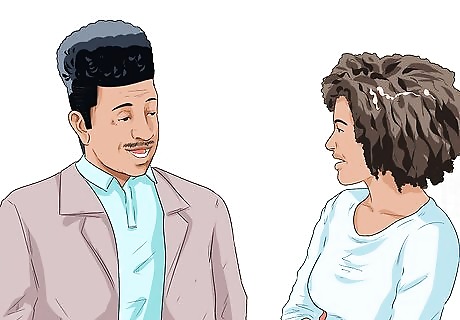
Conduct subsequent sessions. You will usually need at least 4-12 sessions to accomplish your systematic desensitization goals. You should start each session by repeating the last item of the previous session. For example, if you ended the previous session by watching a video of wasps and bees, you will start the next session watching the same video. If you feel that you need additional guidance, you should consult a therapist for support.
Using Cognitive Therapy
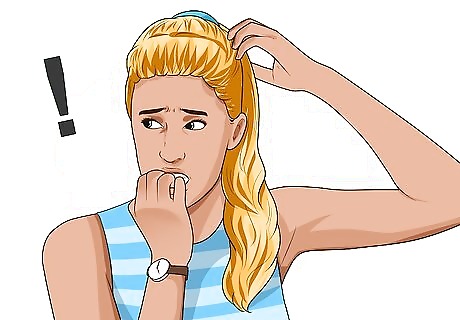
Identify negative thoughts. Many times, anxiety and fear stem from unrealistic thoughts or expectations that we have about an encounter with a wasp or bee. Cognitive therapy will help replace those thoughts, but the first step is to recognize them. Negative thought patterns typical come in three categories: Fortune telling is when you assume that you already know the outcome of an encounter. “If I see a wasp or bee, I will panic and get stung.” Overgeneralizing is when you use one specific incident and project it on all future encounters. “Last time I saw a wasp or bee it stung me. I know, if I see one again, it will sting me.” Catastrophizing is when you imagine that an encounter will be as bad as it could possibly be. “If I see a wasp or bee then there is probably a nest or hive nearby. They will all attack me. What if I’m allergic? I might die.”

Challenge your negative thoughts. Ask yourself if there is any evidence to support your fear. Usually, you will find that there is little or no evidence to suggest you will be stung or attacked by wasps or bees. It is sometimes helpful to imagine what you would say to a friend who expressed similar fears. If you would tell you friend that their anxiety is unreasonable, it will help you to recognize that your own anxiety is unreasonable. This can be a good place to consult a therapist to help you walk through which thoughts are really concerning and which ones might be exaggerated.
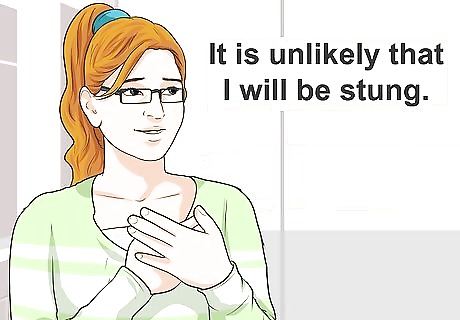
Introduce more reasonable thoughts about wasps and bees. Once you have acknowledged that your fears are exaggerated, you can start to think in a more positive way. Instead of thinking something like “I will definitely be stung,” you can think something like “It is unlikely that I will be stung.” This will help to moderate your fear and anxiety because you are evaluating the situation from a reasonable point of view.
Modeling Your Behavior After Someone
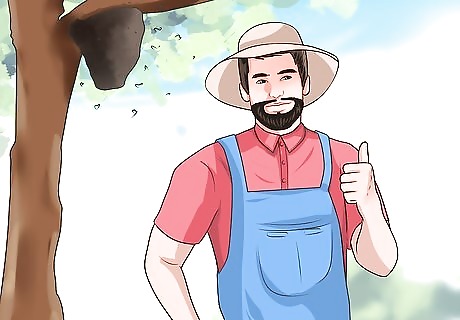
Choose a person to model. This can be a close friend or could be an expert on wasps and bees. The important thing is that the model will respond to wasps and bees in a relaxed way. Be sure to choose a model that you are comfortable with. If you are working with a therapist, they will likely be able to help you find a suitable model or be your model for this treatment.
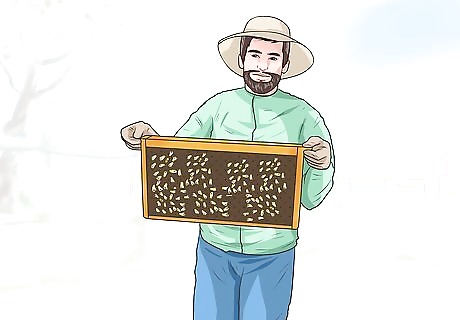
Observe the model around wasps and bees. The first step is to watch how your model responds when they are near wasps or bees. Be sure to use your relaxation techniques to remain calm as you observe them. If you become anxious while watching them, discontinue the modeling observation and focus on relaxing until you are able to begin again. This will give you a frame of reference for how you can respond calmly. It will also lay the foundation for you imitating their behavior.

Imitate the model’s behavior around wasps and bees. Once you feel comfortable and watching someone model the behavior no longer makes you anxious, you should join the model around wasps and bees. With your model by your side, you can imitate how they respond to the wasps and bees. This will help you learn to be calm and relaxed around the wasps and bees on your own.
Using Biofeedback
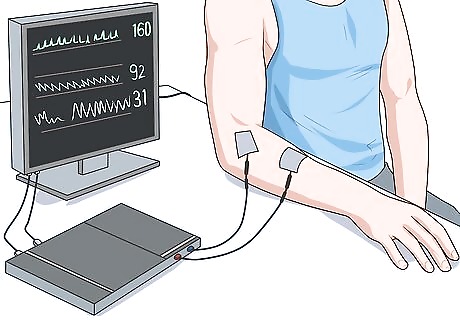
Decide on what variables to measure. Biofeedback is the process of measuring the body’s response to a stimulus in order to help control the response. Responses that are often measured are heart rate and blood pressure. You can buy instruments to measure both heart rate and blood pressure over the counter at any pharmacy. A therapist or other medical professional can be of great help for this step.
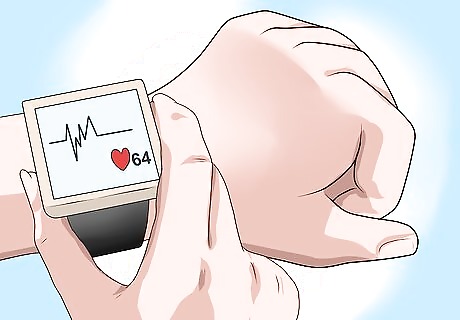
Prepare the instruments. You should be ready to monitor your body’s responses before exposing yourself to wasps or bees in any way. For example, if you are going to measure heart rate, make sure that the heart rate monitor is in place before exposing yourself to wasps or bees.

Expose yourself to wasps or bees. You can expose yourself to something such as a video of wasps or bees. Choose an exposure that you think you can handle without being too overwhelmed. The important part is to monitor your body’s response to the exposure.

Respond to the biofeedback. Use the information you get from the biofeedback to guide your relaxation efforts. When you notice your heart rate going up, start attempting to relax yourself. When you notice that your heart rate is going back down, you know that the relaxation technique is working. You can use relaxation techniques such as: Guided imagery. For this relaxation technique, you would need to imagine a serene, quiet place and use the imagery to calm yourself down. Autogenic phrases. For this relaxation technique, you would repeat calming phrases to yourself, such as “I am feeling calm and still.” Deep Breathing.
Identifying Roots and Triggers of Your Fear
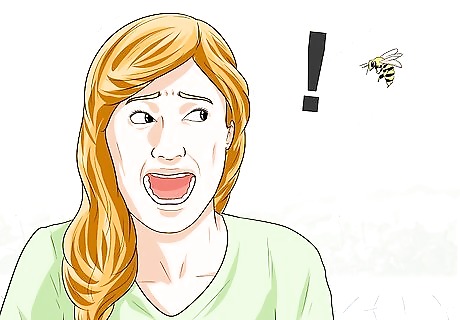
Keep notes of any fear or anxiety. If something related to wasps or bees causes a reaction, you should make a note of it. This will help you identify the triggers that cause you to feel anxious or afraid. Knowing this triggers can help you treat and/or avoid your fears.
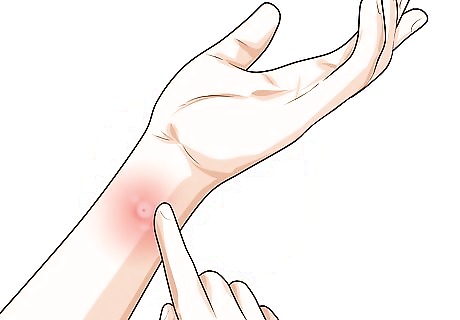
Think back to previous encounters with wasps or bees. Phobias are learned behaviors. This means that you were not born afraid of wasps or bees, you have learned over the course of your life to fear them. This type of fear often comes from an unpleasant encounter such as being stung as a child. Try to identify the roots of your fears so that you can tear down the false assumptions that have created your phobia.
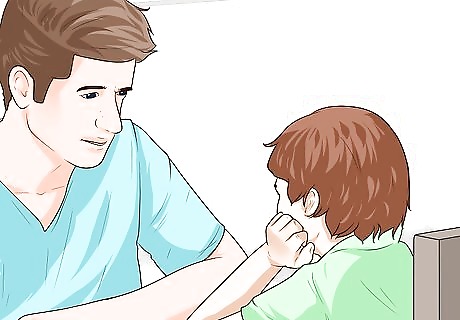
Reconsider everything that you were taught about wasps and bees. It is all too common that parents, teachers, or other role models inadvertently teach us to have unreasonable fears. If the only thing you were ever taught about bees is that they might sting you, causing pain, you likely will not have a positive outlook on them. This can eventually lead to anxiety and fear of thing you misunderstand.



















Comments
0 comment